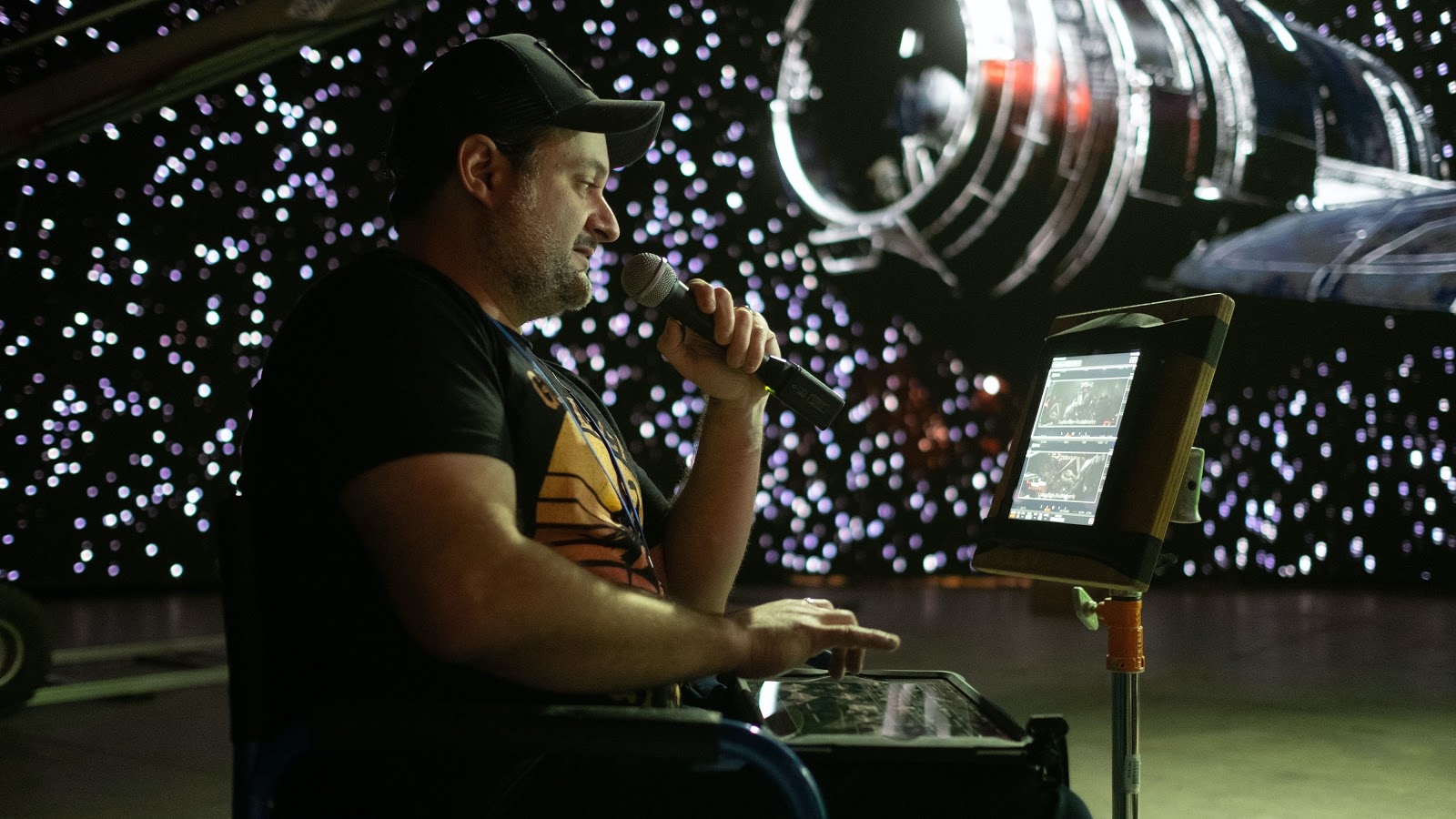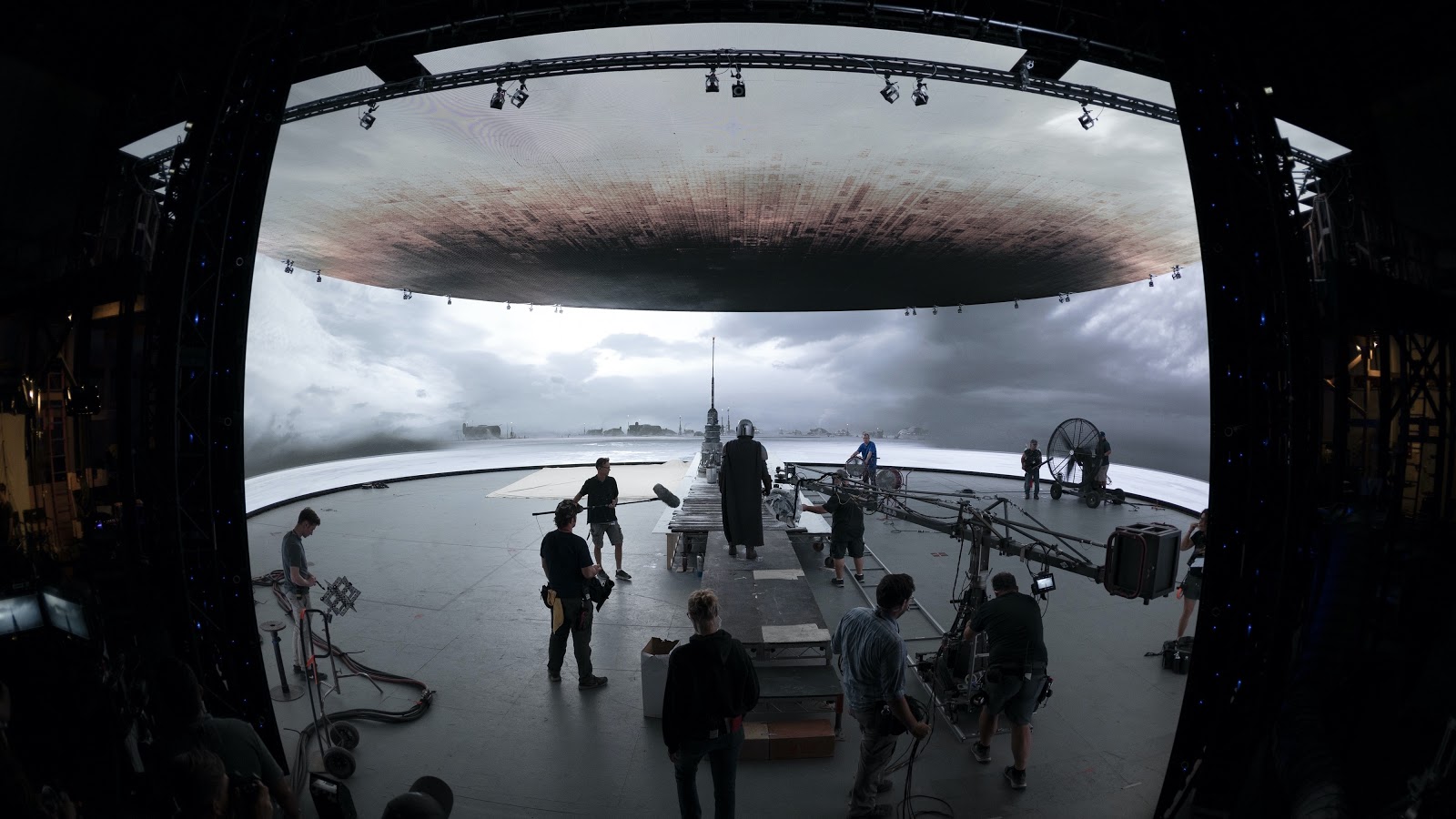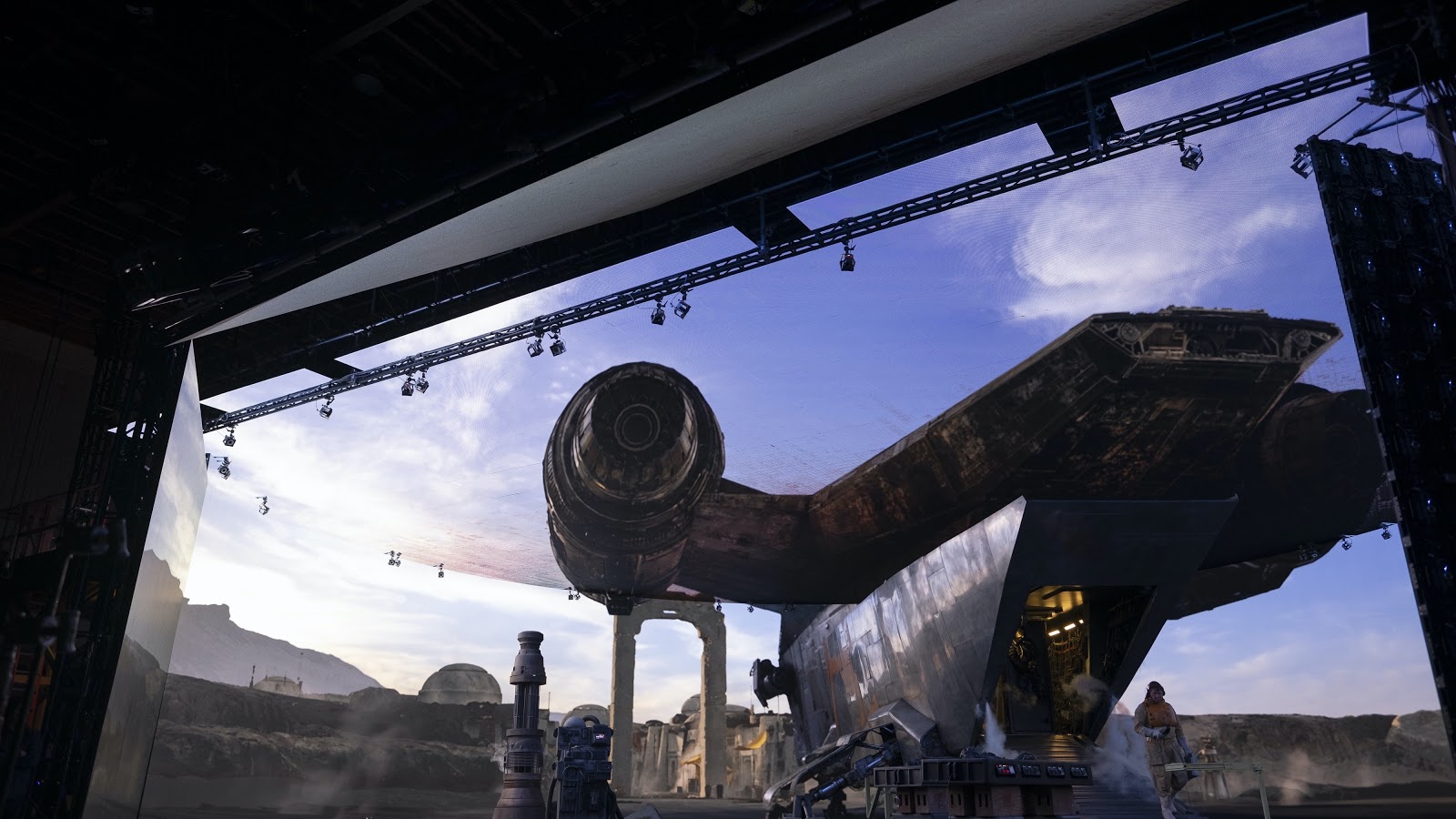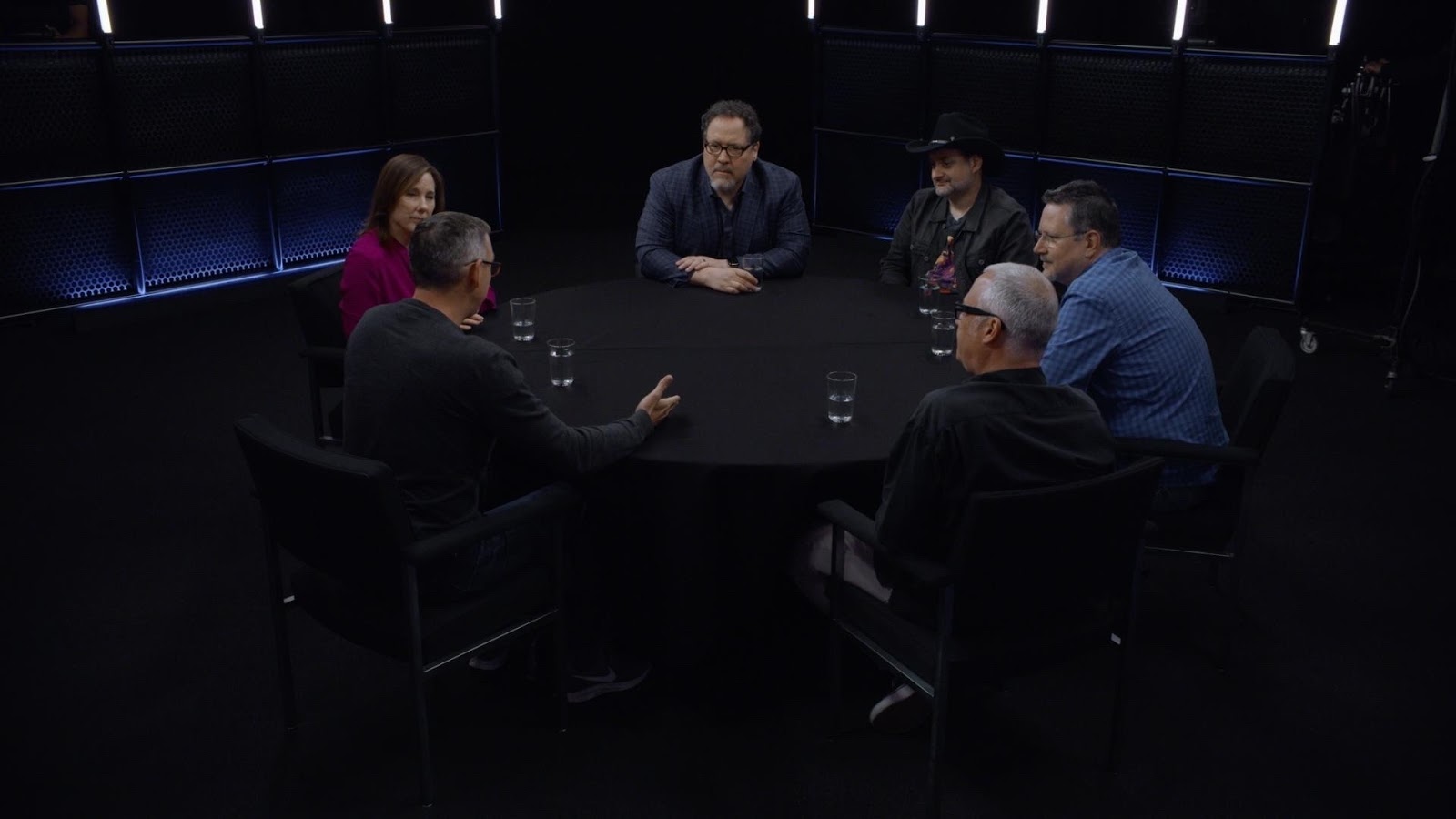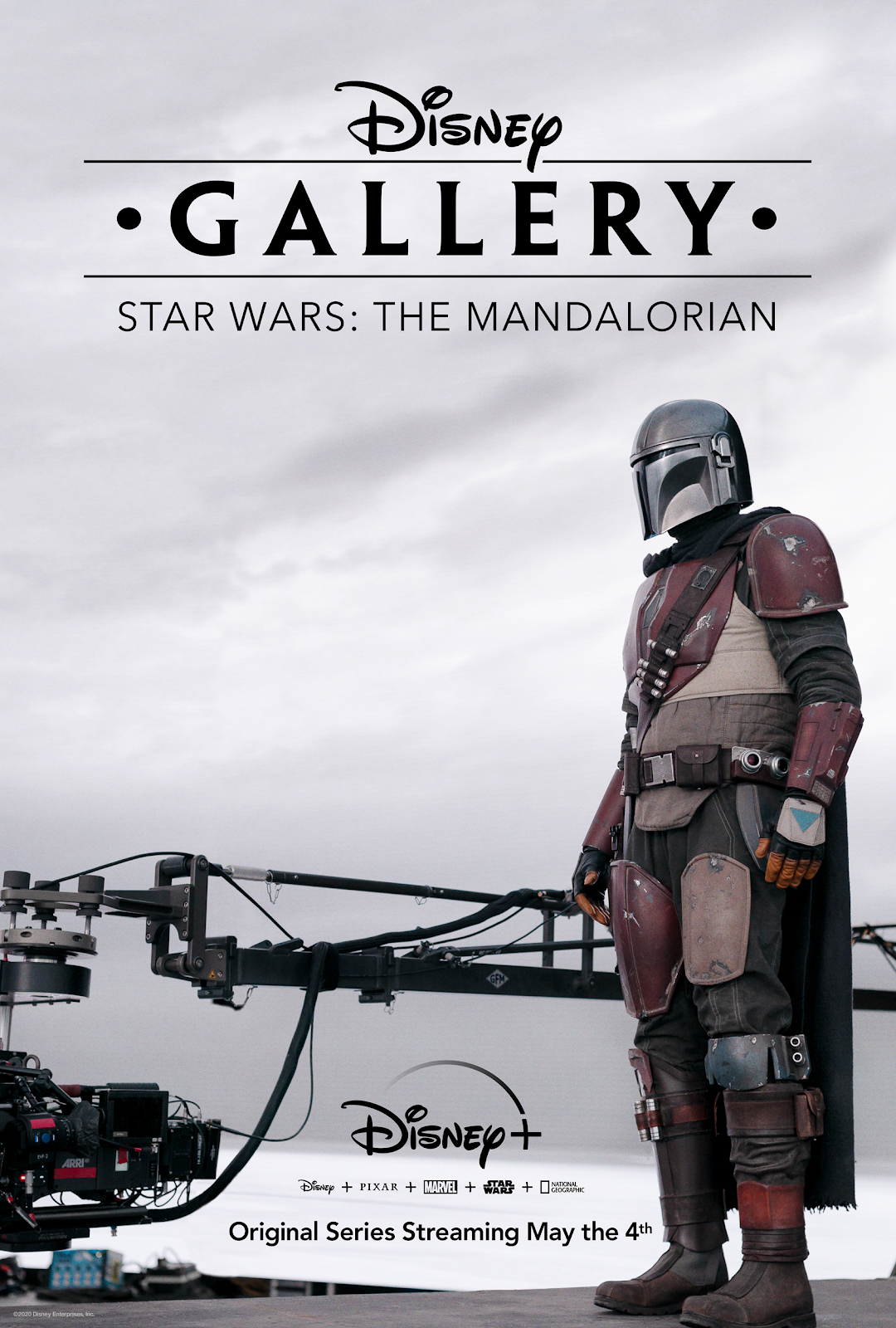Hello and welcome to Laughing Place’s weekly recap of the behind-the-scenes docuseries Disney Gallery: The Mandalorian on Disney+.
This week’s new episode is entitled “Technology” and deals with what is undoubtedly the most groundbreaking and fascinating aspect of The Mandalorian’s production: the innovative advancements in rear projection that made it possible to shoot the show with many of its out-of-this-world locations in-camera. Below is a list of the most interesting tidbits we learned about this process from this captivating half hour.
- Jon Favreau learned how to shoot live-action with the intention of adding CG effects later via his experience directing the movies Elf, Zathura, and Iron Man.
- He says things like interactive light are difficult to fake in post-production if you don’t get them right on set.
- The environments in Favreau’s The Jungle Book remake were created digitally but the crew used video wall panels to cast interactive light and shadows on actor Neel Sethi. But the problem with that production was having to move the blue screen around when they wanted to change angles.
- The Lion King took the process one step further by utilizing consumer Virtual Reality equipment to place the filmmakers inside pre-created environments. Cameras could be operated within VR and the landscapes would generate around them using video game engine software.
- Returning to work with Industrial Light & Magic again (after they had contributed to Iron Man) for The Mandalorian, Favreau and his team decided to push the technology even further and combine everything they had learned to invent a new technique.
- Favreau formed a “think tank” alongside visual effects supervisor Richard Bluff, Lucasfilm president Kathleen Kennedy, executive producer Dave Filoni, VFX artist Rob Bredow, Epic Games’ chief technical officer Kim Libreri, representatives from the tech firm Magnopus, and more ILM folks to figure out if they could pull this off.
- The Mandalorian is the first production ever to use real-time rendering and video wall in-camera set extensions and effects. This process helped the crew achieve the Star Wars look while remaining within the budget and timeframe necessary to create an eight-episode live-action television series.
- Rear projection techniques have been utilized in the motion picture industry since the 1930s, though Favreau misspeaks here when he says front projection was used in 1933’s King Kong. That process was not developed until the late 1940s. Stanley Kubrick did make great use of front projection in 1968’s 2001: A Space Odyssey.
- Favreau and his team named the immersive projection room they created “The Volume.” It’s a big circular room that’s 75 feet in diameter. The walls and ceiling above are made up of thousands of LED screens. The digitally created environment is displayed on these screens to create the illusion that the crew is filming on location.
- The idea is to try and capture as much in-camera as possible as opposed to shooting against a green screen and digitally altering the image afterward in post-production.
- Photographs of real locations were altered to create the texture and geography of the fictional locations on the show. The camera’s movement provided positional data to the system to allow the backgrounds to move in sync with the perspective of the lens.
- The Volume also allowed the filmmakers to preserve a certain time of day for an extended period of time, or change the position of large objects or features of the landscapes without much difficulty.
- Favreau credits the technological advancements furthered by Star Wars creator George Lucas for making The Volume possible, along with Kathleen Kennedy’s current guidance as president of Lucasfilm and ILM.
- Director Rick Famuyiwa embraced the freedom presented to him by working in The Volume, and was surprised when Favreau encouraged deviation from the shots they had planned during the pre-visualization stage.
- Changes to the action, blocking, and dialogue could be made on-the-fly as long as the VFX crew and art department were given enough time to build the environments necessary for the scene.
- In addition to the digital environments being displayed on the walls and ceiling of The Volume, the production design team installed matching ground and props to place in the “real” space of the area’s floor. Part of the full-size Razor Crest ship was built for this purpose.
- The use of the Unreal game engine was so important because of the real-time rendering of the image being displayed on The Volume’s screens depending on the camera’s movement.
- Directors Taika Waititi and Dave Filoni say being inside The Volume was so realistic that it was difficult for the human eye to differentiate between what was real and what wasn’t.
- The Mandalorian’s armor was designed to be reflective in order to take advantage of the ambient light created by The Volume, and not having to paint green screens out of the reflections.
- Richard Bluff says one of the best things about the technological advancements provided by The Volume is that it allows the crew to work in a more traditional way.
- The Volume also allows for quicker and easier reshoots or pickup shots.
- Dave Filoni shot second-unit for some of the other directors on the show. He applied the skills he learned from George Lucas on Star Wars: The Clone Wars to the techniques involved with shooting in The Volume.
- The cast of The Mandalorian loved working in The Volume. Giancarlo Esposito says he appreciated having physical objects to touch and landscapes to look at in the fictional environment. Carl Weathers says there was nothing like shooting the lava tunnel sequence in the final episode, as it felt like the walls around him were actually moving. “You didn’t have to pretend anymore.”
- Bryce Dallas Howard was amazed at how The Volume truly represents George Lucas’s vision for the future of filmmaking finally coming to fruition.
- Favreau is excited for other filmmakers to embrace this technology and run with it.
The first four episodes of Disney Gallery: The Mandalorian are now streaming exclusively on Disney+.
Sign up for Disney+ or the Disney Streaming Bundle (Disney+, ESPN+, and ad-supported Hulu) now


